Montour Railroad
Mileposts
History
Maps
Roster
Mines
Links
Gallery
Working on the
Montour
Schaeffer
Stories
Sposato
Stories
Employees
Railroading
101

|
|
Milepost
23
Venice, Gillmore Junciton and
The Midland Spur
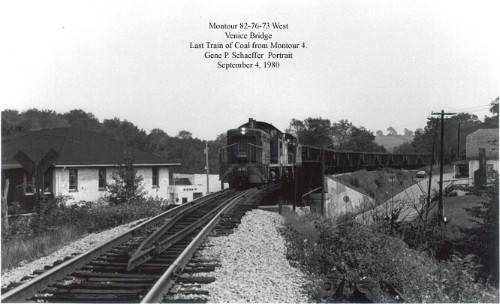 |
Such a sad day...
Thursday September 4, 1980.
Montour Extra 82-76-73 West crosses Venice Bridge with 7 coal for
Champion and 52 empty hoppers to set off at Peacock for Westland. This
was the last crew called for Montour 4.
The rails over Venice Bridge would shine a few more times, as trains of
box cars were taken to the Muse Branch, and from National Tunnel to
Venice Bridge for temporary storage.
The westward Yard Board for Gilmore Junction is to the left. Mile Post
24 is near the concrete abutment to the right. - Gene
P. Schaeffer: | | | 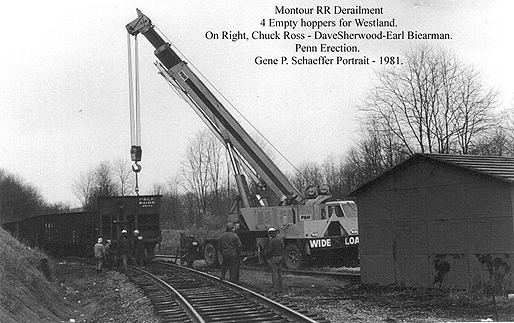 | Gene
P. Schaeffer:
East
is successful making it through Boggs without derailing, but not the
case at Gilmore Junction. C.A.R. later states at Gilmore Junction, when
the telephone rang that morning at home, he expected it to be
information on the 74 derailing in Boggs, not Gilmore Jct.
Penn Erection arrives Gilmore Jct with the assistance of the Montour
Junction Car Shop Department rerails the derailed hoppers using the
rubber tire crane that is backed out onto the main track using wood
blocks for crossing rail. A series of black & white and color images are made. Chuck
Ross,
Dave Sherwood and Earl Biearman pose for the camera in another
portrait..
Meanwhile, earlier that March 6
Morning, Train Dispatcher Paul Luttenauer is on the radio talking with
C.A. Ross about the FORD guys here to look over the locomotives.
Remember, they are up For Sale. Ross tells Luttenauer tell those guys
to take 79 South to Bridgeville, Route 50 West to Southview. They can
drive right to them at the crossing and inspect them there.
Sometime later on, I spot 2 guys dressed in white overalls, hood doors
open, inside the engine compartment...inside the air compressor
compartments... inside the cab...etc...looking over the SW-9's...
After the empties are back on track, center pins, roller bearings brake
rigging are o.k.'d to go, Extra 74 East couples into the remaining
empty hoppers, (the head end of the empties were taken to Westland
earlier so as to clear both road crossings) then departs for Westland
for the 2nd time.
The photographer is standing East
of the apex on the Westland Branch as Extra 74 climbs the 2 percent to
the top of the hill as a series of photographs is made of the
locomotives climbing the grade towards the vertical curve... As the 74
East approaches, a snow squall participates in the event. G.P.S. | | |  | While
exploring the RoW for the Westland Branch at Gilmore Junction “ I found
the rails still embedded in Southview Road. This has been noted before.
The Montour crossed the road just to the left of the telephone pole
about a foot from the winding road sign.
You can see the right-hand rail sticking out of the road in the lower
foreground.
The Branch ran to the left of the shelter – which is where the tool
shed was located - where a speeder was kept. The base for the shed is
16 x 16 feet and in Gene's picture above you can see it was a big shed.- Bryan Seip
| | |  | About half way
between Southview Road and Rt 50 I did spot this sign back in the
brush. This was on the LEFT side of the RoW when approaching Rt 50, so it was
on the opposite side from the engineer. Would it would be the marker for the control box that activated the
crossing signals on Rt 50?? Or was it the marker for where the flashers
needed to be activated when a train reached that point? Where was the control box? I didn't see any evidence of that either a
post or a box. Did trains have to stop to activate the crossing flashers each time it
approached Rt 50? Would this block Southview Road while the trainman
activated the flashers? And where was the flasher control on the other side of Rt 50?
Bryan Seip
The signal sign you found Bryan would have been
for the westbound trains off the branch after crossing Rt 50 to start
whistling for Southview Crossing.. This was the MRR version of a
whistle post for the Southview crossing and all other crossings.
This signal post was very close to the crossing as was the eastbound
signal post for the same crossing. Note the below photo showing the
eastbound short signal post above the retaining wall to the right. - Tim Sposato
| | | 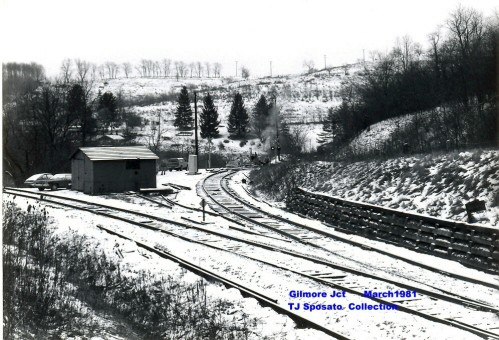 | Gilmore Junction 1981 - TJ Sposato
The photo is a follow up of a derailment, a few days later, showing the repaired track,
Section 1 & 2 gangs were there finishing up the fine tuning of
the
track structure. The smoke at the crossing was the ever present fire
for warmth and heating lunches in cold weather.
Also a good view of the section house with a push truck next to it and
assorted rail from rail replacement on the main line as well as rails
damaged from the derailment along the branch. Several trackmen and trucks are near the crossing and the silver relay
box for the crossing circuit stands out well. The branch switch and 'Y'
board was out of frame to the right along with the wooden phone shanty
that still stood in 1981.
All in all, a good view of the Jct layout.
Tim Sposato | | | 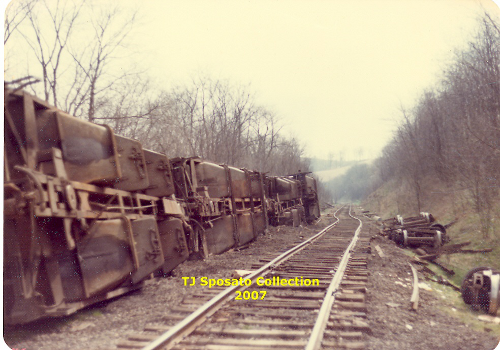 | Some
after shots of the derailment. State Rt 50 and the P&WV is to
the left. Looking East, all four car bottoms are seen as well as
the small "shoo-fly" on the straight track to clear the pockets
of the east car, PC 472765. Note all the trucks lying
along the right side six foot, and the typical 90 lb rail used on the
majority of the MRR. - Tim Sposato
| | | Westland - more can be found on the Westland page.
   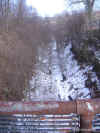 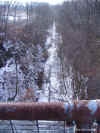 | | |
|
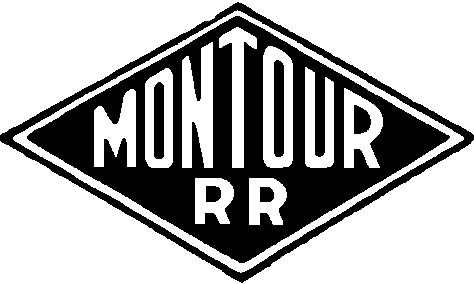 Montour Railroad
Montour Railroad 